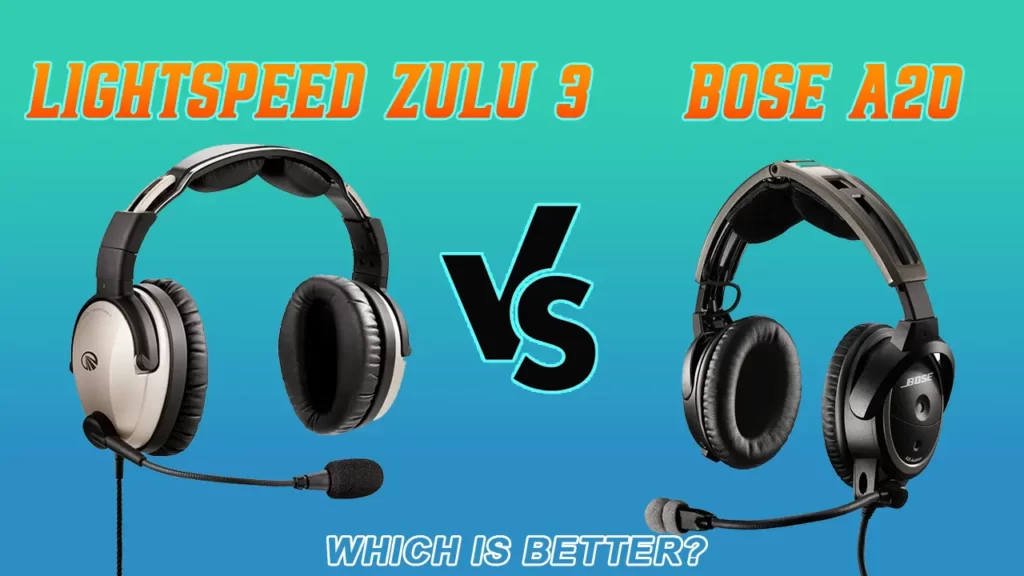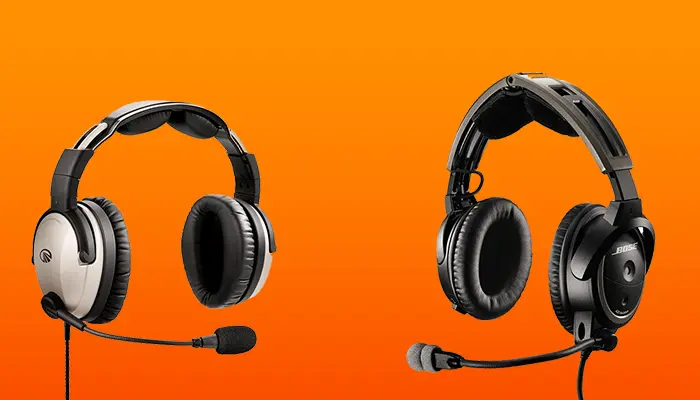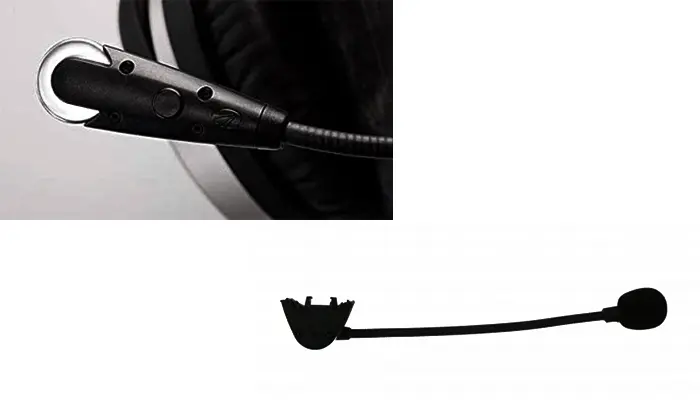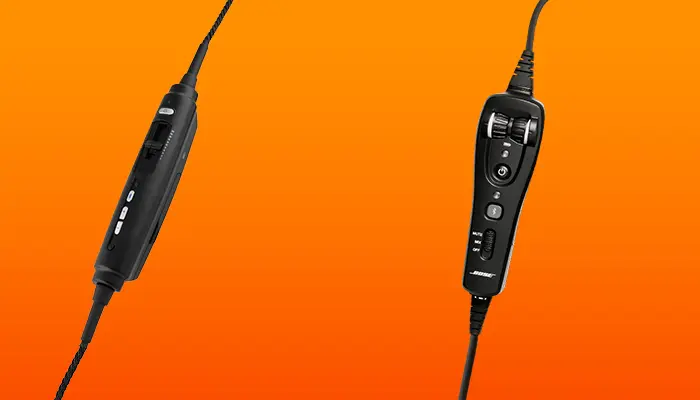The need for a good aviation headset is important for the safety of the aircraft. The pilot has to be very aware of his surroundings and it can only happen by the ATC or the Air Traffic Control that alerts the pilot via sound communication.
The Bose A20 and the Lightspeed Zulu 3 are making the headlines when it comes to the best aviation headsets in the market.

We have compared both headsets with respect to their important features and presented here an unbiased article. We hope by the end of this article you can make a clear choice as to which of these headsets will be on your head for your next flight.
Design and Comfort

The Lightspeed Zulu 3 and Bose A20 are both high-end aviation headsets designed for use in airplanes. They both feature advanced noise-cancellation technology and are designed to provide clear communication in a loud and noisy environment. However, there are some differences in their design that are worth noting.
One of the main differences in design between the two headsets is the size and weight. The Lightspeed Zulu 3 is slightly larger and heavier than the Bose A20. The Zulu 3 weighs around 14.6 ounces with dimensions measuring about 13 x 11 x 5 inches. It is sturdy and heavy which makes it more durable. For long flights, the Zulu 3 can be a great choice but the Bose A20 turns out to be better in terms of comfort.
The Bose A20 is around 12 ounces with dimensions measuring about 10.85 x 7.15 x 6.15 inches. The Bose A20 is lighter and has a more minimalistic build which is a great choice for pilots as most pilots using this headset claim that they are very comfortable to wear for more than 8 hours a day.
Another difference is the ear cups. The Zulu 3 ear cups are slightly larger and have a more padded design that is intended to provide more comfort during long flights. The Bose A20 ear cups are smaller and have a more minimalistic design, which makes them less bulky and more portable.
The clamping force on both headsets is a bit different. Bose claims that their aviation headsets have 30% less clamping force and it seems to be true. The clamping force is just perfect and does make you feel the pain from wearing the headsets for long periods.
The Zulu 3 has a bit harder clamping force than the Bose headset which puts more pressure around your ears, you won’t feel it if you are using them for short periods but you’ll notice it after wearing it for 7-8 hours a day.
Audio Quality
When considering aviation headsets it is very important to have noise cancellation or noise reduction. When you are flying a helicopter you experience too much noise from the rotor as a result if you don’t use a good quality headset you might get noise fatigue.
Moreover, if you are not using a high-quality headset with noise cancellation the person at the ATC or Air Trafic Control will not be able to understand your commands and you on the other hand will not be able to understand his/her commands.
Your co-pilot will not be able to communicate with you efficiently and all your attention will be on the noise coming from the rotor. So, noise cancellation in aviation headsets holds a very important place.
One of the main differences in audio quality between the two headsets is the noise cancellation technology. The Lightspeed Zulu 3 features active noise cancellation technology, which uses microphones to actively cancel out ambient noise. The Lightspeed uses its own technology to block out noise
The Bose A20 features active and passive noise reduction technology, which uses a combination of sound-blocking materials and active noise cancellation to reduce ambient noise. Bose seems to have mastered its noise-canceling technology better than any other company and which is why they are the favorite in the industry. Though some people like the Zulu 3.
Another difference is the frequency range of both headsets. The Zulu 3 covers all frequencies in a range of 20Hz to 20KHz, which is the natural range of human hearing. The Bose A20 covers all frequencies from 15Hz to 15KHz, though these are not much different.
The Zulu 3 has a better hold over the mid frequencies which is the voice of a person. The Bose A20 holds better on to its low frequencies which is not much needed in aviation headsets. The Zulu 3, therefore, turns out to be better in terms of frequency response.
Microphone Quality

One of the main differences in microphone quality between the two headsets is the microphone boom design. The Lightspeed Zulu 3 has a more flexible microphone boom that can be adjusted to the user’s preference and also has a more intuitive volume control system. The Bose A20 has a more fixed microphone boom, which can be less flexible for different head sizes and shapes.
The microphone boom on the Zulu 3 can be changed as per your preference but the Bose A20’s cannot be changed. The Bose A20’s microphone is a bit better in terms of design. You can plug it in whichever earcup you like and also. Bose’s microphone is an electret microphone which means it converts your voice into an electric signal.
Connectivity and Compatibility
One of the main differences in connectivity between the two headsets is the type of connectors they use. The Lightspeed Zulu 3 uses a standard 6-pin Lemo single-plug connector that is compatible with most general aviation aircraft. The Bose A20 uses a proprietary connector with dual plugs that are designed specifically for use with the Bose Aircraft Interface Module (AIM) which is compatible with most general aviation aircraft.
Another difference is the wireless connectivity. The Zulu 3 does not have any wireless connectivity options, while the Bose A20 has Bluetooth wireless connectivity that allows the user to connect to a mobile device or tablet. This allows the user to listen to music or make phone calls while on a flight.

Both headsets feature an integrated control box to input any optional auxiliary cable or change to wireless connectivity. They also offer features such as changing from battery power to airplane power which is a very useful option.
The control box also helps in adjusting the volume. The control box on the Zulu 3 also includes a feature of easy sound reduction which reduces the music sound in the background, and where communication is concerned, this is a very useful feature and will enable you to listen to music on your flights.
Batteries
The batteries used on both headsets are 2 AA batteries that can last for around 40 hours. Specifically, the battery on the Zulu 3 lasts for around 40 hours whereas the batteries on the Bose A20 last for more than 45 hours.
The batteries ensure that you can listen to music wirelessly via Bluetooth. The control box on each of the headsets can be used to switch between wired or wireless mediums. You can also change to airplane power when you are connected to the Aircraft.
If you want to use these headphones only for music listening then it can be a bad choice because, at this price range, you can get great music-listening headphones with many extra features.
Verdict – Lightspeed Zulu 3 vs Bose A20
| Features | Lightspeed Zulu 3 | Bose A20 |
|---|---|---|
| Design | ❌ | ✅ |
| Comfort | ❌ | ✅ |
| Audio Quality | ✅ | ✅ |
| Microphone Quality | ✅ | ❌ |
| Connectivity and Compatibility | ✅ | ✅ |
| Batteries | ❌ | ✅ |
| Price | Check Price | Check Price |
The Lightspeed Zulu 3 and the Bose A20 are both high-quality aviation headsets and certainly one of the best in the market. You get a load of features with both the headphones and the most important feature i.e., noise-cancellation is one of the core strengths of these headsets is unbeatable in the industry.
Frequently Asked Questions
Is Zulu 3 TSO certified?
No, Zulu 3 is not TSO certified while the Bose A20 is TSO certified
Can Bose A20 be used for music?
Yes, you can listen to music either by an auxiliary cable or via Bluetooth
For more such content, visit: Beatmentors – Music Gear Guides & Reviews